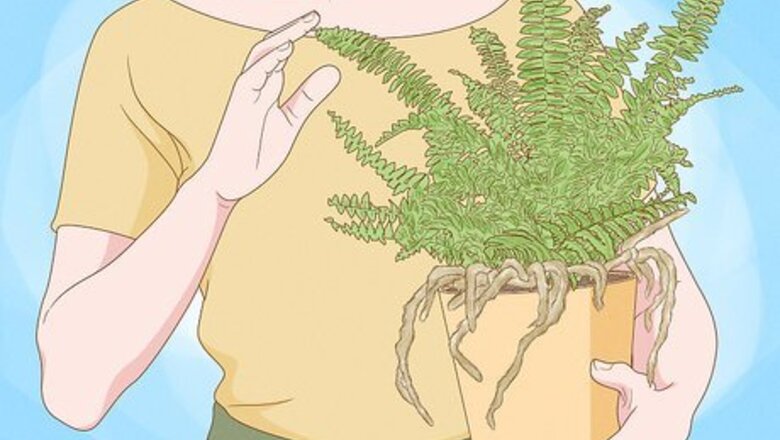
views
X
Research source
The decorative fern's distinctive light brown fuzzy rhizomes resemble rabbit feet, giving the fern its name. By knowing how to plant, water, and care for your rabbit foot fern, you can have a happy and healthy houseplant.
Planting Your Rabbit Foot Fern
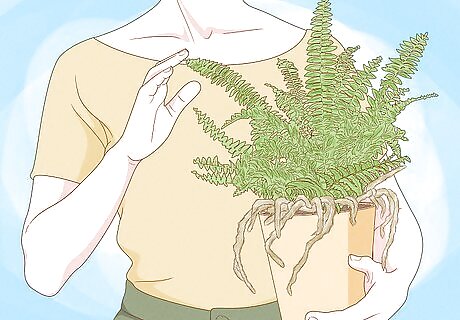
Purchase a rabbit foot fern plant. Because rabbit foot ferns do not grow from seeds, but instead are propagated by dividing rhizomes or collecting spores, you must buy an existing plant. Your fern can still be a young plant when you buy it. Rabbit foot ferns are available at garden centers and through online distributors. Choose a plant that looks vibrant, green, and healthy. If you notice any brown or wilting leaves, pick out a different plant.
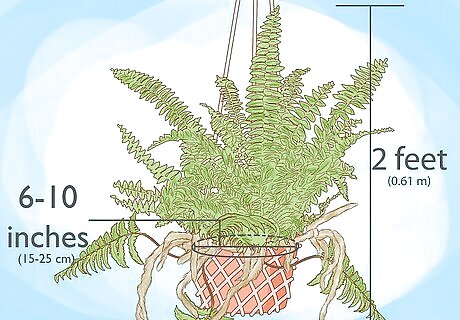
Plant the rabbit foot fern in a hanging basket. Since the rhizomes hang over the sides of the container and can grow up to 2 feet (0.61 m) long, the rabbit foot fern is ideal for a hanging basket. The container should be either plastic or clay, and 6–10 inches (15–25 cm) in diameter. Plastic containers tend to allow for a more even distribution of water than clay pots, but clay pots are sturdier and may last longer.

Grow the fern in porous soil that drains well. You can find a porous soil mix at your local gardening store. A great soil mix should contain 2 parts peat moss, 1 part loam, and 1 part sand or perlite, which is a volcanic glass with a high water content. The soil should have a neutral pH of 6.6 to 7.5. Fill your container about 3 inches (7.6 cm) from the top with soil mix. Soil that doesn’t drain well will hold too much moisture and cause the plant to rot.
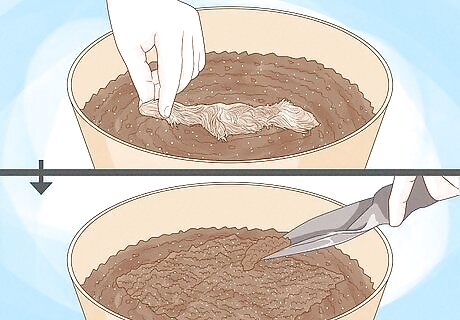
Plant rhizomes near the top of the soil. Rabbit foot ferns have shallow root systems. When you plant your fern in its container, make sure to not plant it too deeply. Keep the rhizomes at the surface of the soil so they don’t rot.
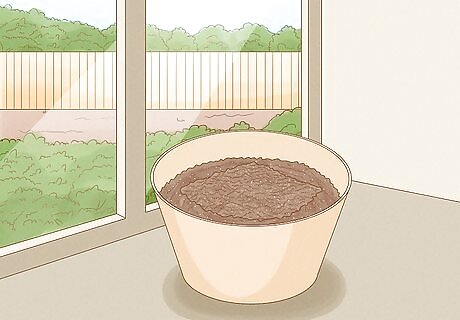
Place the rabbit foot fern in indirect light. During the winter months in the northern hemisphere, a north-facing window is an ideal location for the fern. During the spring and summer months, when the sun is higher on the horizon, choose an east-facing window with filtered light. Avoid south- and west-facing windows where the direct sunlight may burn the fern's leaves.
Caring for Your Plant
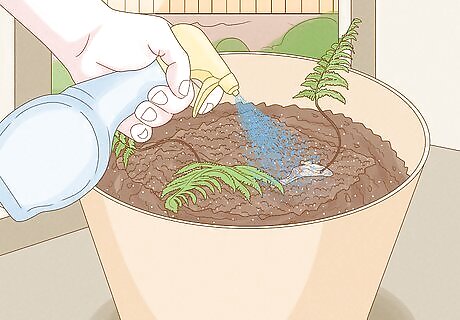
Water the fern sparingly. Allow the soil in the container to dry out slightly between waterings. When the soil is dry or almost dry to the touch, it's time to water. Over-watering will cause the leaves to yellow and may result in root rot. Do not allow the plant to sit in water. Mist the fuzzy rhizomes regularly. Give them water every few days, or as needed, to prevent them from drying out.
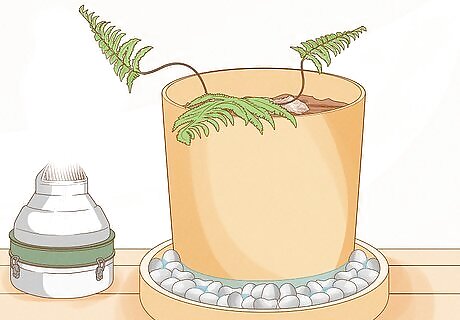
Grow the fern in a moderately humid environment. If your heat is on in your home during winter months, consider using a room humidifier where your rabbit foot fern is located. If you don't have a room humidifier, place the fern's container on a tray of wet pebbles to increase the humidity around the plant. Refill the tray as the water evaporates.
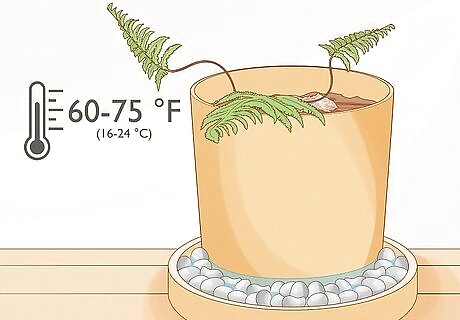
Maintain a 60–75 °F (16–24 °C) environment. The rabbit foot fern will thrive indoors in comfortable house temperatures. If the temperature drops below 60 °F (16 °C), check the plant before watering and only water when the soil is dry to the touch. If the temperature rises above 75 °F (24 °C), you may need to water the plant more often.
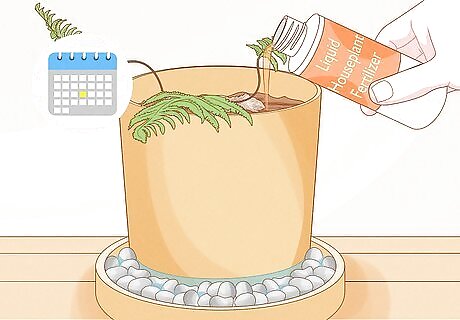
Fertilize the rabbit foot fern monthly. Any liquid houseplant fertilizer can be used to feed the fern, but use only about half the recommended amount. Too much fertilizer may scorch the leaves. Do not fertilize newly potted plants for at least four to six months, or until the plant is showing signs of active growth.
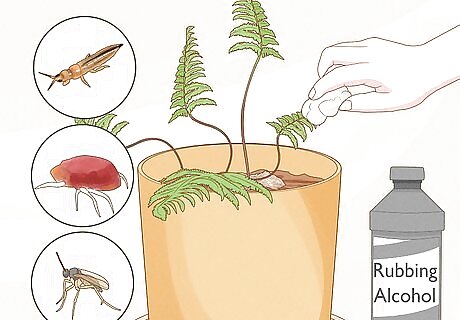
Examine the fern regularly for pests. Thrips, mites and fungus gnats are often found on the foliage of houseplants like the rabbit foot fern. These pests like wet soil, so keep pests away by not over-watering. To remove pests, brush them off with a wet towel or a cotton swab dipped in alcohol. Most houseplant pesticides are not safe for use on ferns.
Propagating the Rabbit Foot Fern
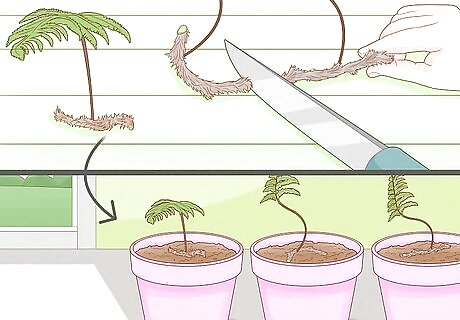
Divide the rhizomes to create more plants. Carefully separate the rhizomes using a sharp knife, keeping the roots and stems attached. Place the rhizomes in a moist potting soil mixture and water as needed. Keep the humidity up and temperature between 60–75 °F (16–24 °C). Keep the soil moist and out of direct sunlight.
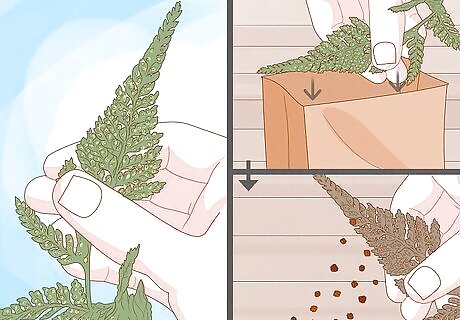
Examine the underside of the leaves for spores. Remove a leaf with dark spores and place it in a paper bag. When the leaf dries, the spores will fall off.
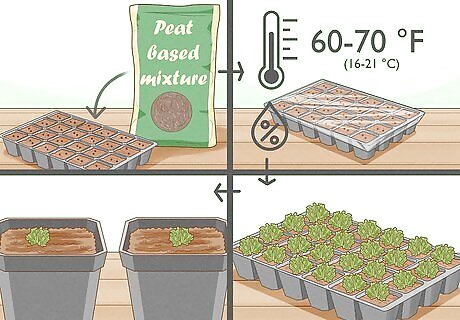
Plant the spores in a peat-based mixture. Water them, cover them with plastic, and keep them at a temperature between 60–70 °F (16–21 °C). Planting spores is a more difficult process than propagating from divisions. When the leaves are about 1 inch (2.5 cm) high, remove the plastic and transplant them to small containers. Keep young ferns in a humid environment since they easily dry out.
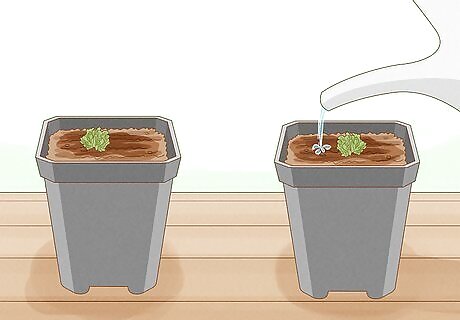
Water the new plants with care. Rabbit foot fern rhizomes hold a lot of water, so do not overwater the newly planted fern or it will rot. Take similar care when watering your spores.



















Comments
0 comment